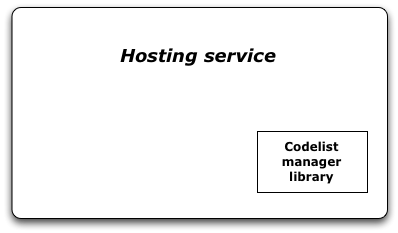Difference between revisions of "Codelist Manager"
m |
m |
||
| Line 5: | Line 5: | ||
A component supporting the entire life-cycle of code lists management including creation (via ingestion if they exists), curation and publishing. | A component supporting the entire life-cycle of code lists management including creation (via ingestion if they exists), curation and publishing. | ||
Code lists are also known as controlled vocabularies or coded value enumerations. | Code lists are also known as controlled vocabularies or coded value enumerations. | ||
| − | They are particularly important | + | They are particularly important at (a) data dissemination and exchange layer among different organisations and (b) at data reporting and production, as to ease the mutual understanding between the originator and the consumer. |
| + | They represents a key concept in the statistical data management. | ||
This document outlines the design rationale, key features, and high-level architecture, as well as the options deployment. | This document outlines the design rationale, key features, and high-level architecture, as well as the options deployment. | ||
| Line 11: | Line 12: | ||
== Overview == | == Overview == | ||
| − | The goal of this | + | The goal of this component is to simplify the management of code lists. |
| + | Data can come from csv (comma separated values) exported form a database or using the sdmx protocol (used by FAO, Eurostat etc.). | ||
== Design == | == Design == | ||
Revision as of 18:07, 18 May 2012
A component supporting the entire life-cycle of code lists management including creation (via ingestion if they exists), curation and publishing. Code lists are also known as controlled vocabularies or coded value enumerations. They are particularly important at (a) data dissemination and exchange layer among different organisations and (b) at data reporting and production, as to ease the mutual understanding between the originator and the consumer. They represents a key concept in the statistical data management.
This document outlines the design rationale, key features, and high-level architecture, as well as the options deployment.
Overview
The goal of this component is to simplify the management of code lists. Data can come from csv (comma separated values) exported form a database or using the sdmx protocol (used by FAO, Eurostat etc.).
Design
Philosophy
This library represents a way to integrate codelist in the system and make it available for multiples use (TimeSeries, Aquamaps or other applications).
Architecture
Deployment
This library must be co-deployed with the hosting service.
Small deployment
Use Cases
Well suited Use Cases
This library is particularly suited for the use in the services that need codelists.
